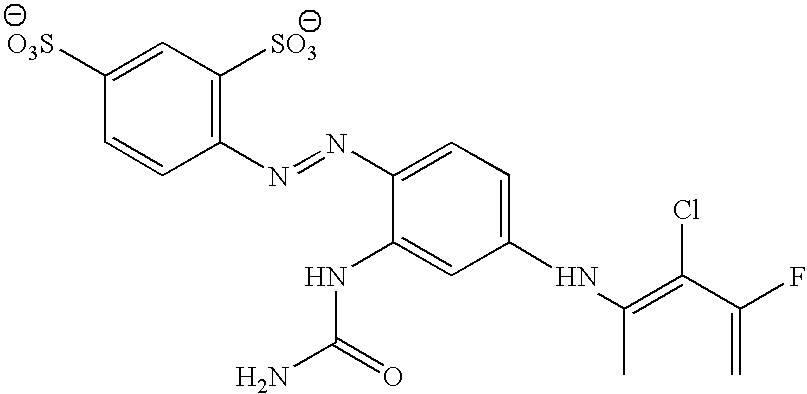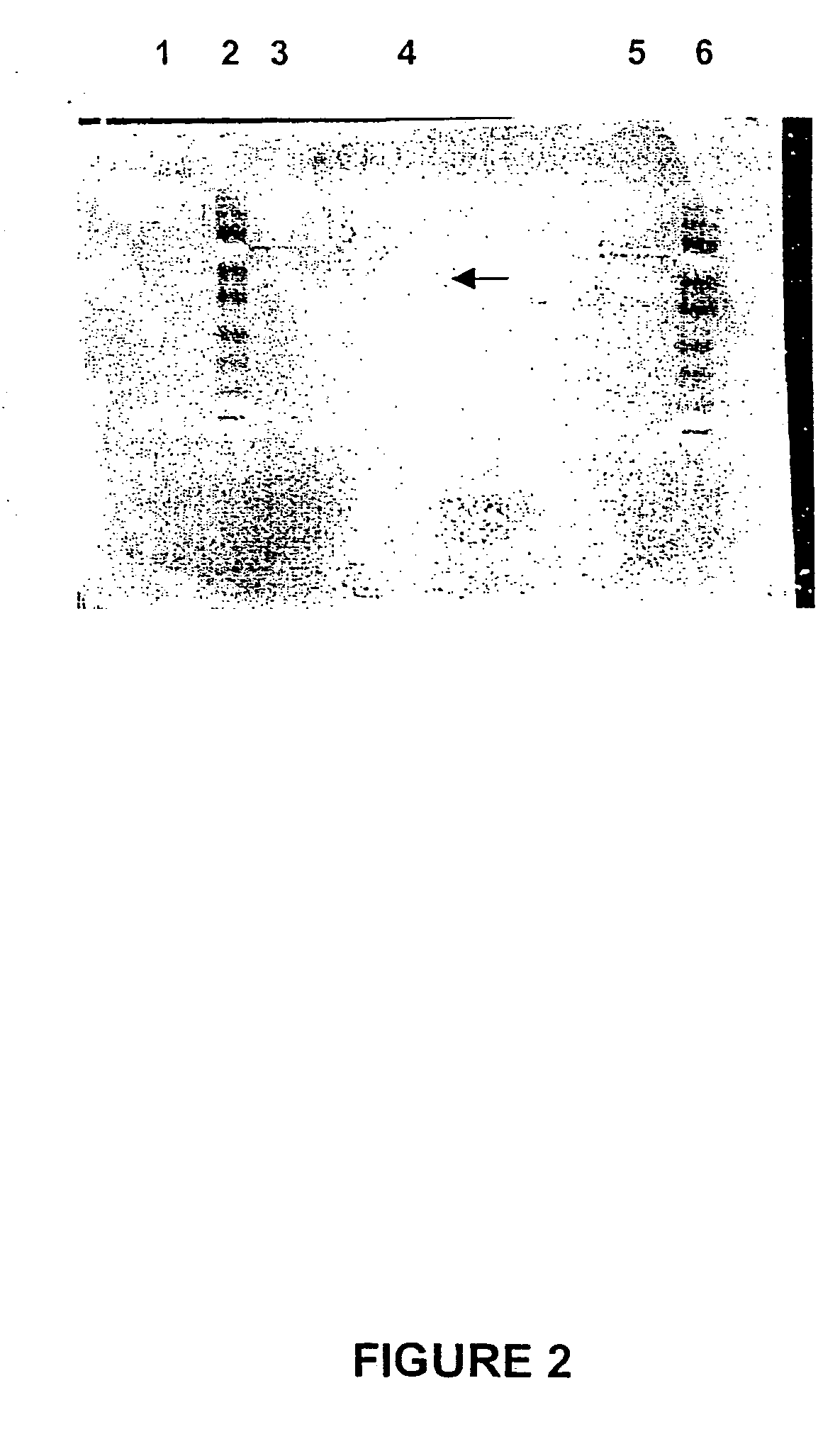Novel gene and uses therefor to modify pasture qualitites of crops
- Summary
- Abstract
- Description
- Claims
- Application Information
AI Technical Summary
Benefits of technology
Problems solved by technology
Method used
Image
Examples
example 2
Purification of Desmodium Leucoanthocyanidin Reductase (LAR)
[0297] Purification of D. uncinatum LAR was achieved using the steps described below. Purification of duplicate 100 g preparations of leaf material was carried out to the hydroxylapatite column stage, and then fractions containing LAR activity were pooled and carried forward as a single extract until LAR was purified to homogeneity.
[0298] Young unexpanded leaves from 100 g Desmodium uncinatum (cv Silverleaf) were harvested and stored at -80.degree. C. When required, the leaf samples were warmed for about 30 min to bring their temperature from -80.degree. C. to -20.degree. C., and homogenized, in two batches, in a total volume of 200 ml of grinding buffer [50 mM Pi, 10% (w / v) glycerol, 1% (w / v) PEG6000, 1 mM Na.sub.2EDTA, 25 mM Na ascorbate, 5 mM DTT, 20 mM mercapto-ethanol, 2 .mu.g / ml leupeptin, 1 .mu.g / ml pepstatin, 1 .mu.g / ml E64, 0.1 mM PMSF] all adjusted to pH 8 at room temperature with NaOH. The homogenate was filtered...
example 3
Amino Acid Sequence Analyses of Purified Desmodium LAR Peptide Fragments
[0311] 1. Internal Amino Acid Sequences
[0312] Purified LAR protein was applied to a 12% (w / v) SDS / polyacrylamide gel that was subsequently stained with Coomassie G-250 (FIG. 1). Briefly 110 .mu.l of the final protein concentrate was precipitated with 4 volumes of acetone at 70.degree. C. for 30 min, cooled and centrifuged at 13,000 rpm in an Eppendorf centrifuge, and the pellet and dissolved in 20 .mu.l of SDS buffer (Laemmli, 1970) and heated for 90 sec in a boiling water bath. The SDS protein solution was subjected to electrophoresis at 200V for 40 min as described by Laemmli (1970). The gel was stained with colloidal Coomassie Blue G250 (0.1% w / v) in 40% MeOH, 10% acetic acid for 30 min and washed extensively with MilliQ water overnight.
[0313] The amount of protein was determined by calibration against known 1 .mu.g protein standards, comprising bovine serum albumin, ovalbumin, and soybean trypsin inhibitor p...
example 4
[0322] Two-dimensional Gel Electrophoresis of Purified Desmodium LAR
[0323] The purified LAR enzyme concentrate obtained in Example 2 (5 .mu.l) was added to 195 .mu.l of 8M urea, 2% (w / v) CHAPS, 0.5% (w / v) Resolyte pH 4-7 (BDH), 70 mM DTT, and 0.02% (w / v) bromophenol blue, and allowed to soak into an 11 cm pH 4-7 Dry-Strip (Pharmacia) containing an immobilized pH gradient. Isoelectric focussing was carried out by gradually increasing the voltage from 300V to 1,500 V over 6 hr and then at 1,500 V overnight. A second dimension was carried out on a 12-18% gradient SDS / polyacrylamide gel (Pharmacia), electrophoresed at a constant current of 20 mA for a total of 1,100 VHr. The gel was fixed and stained with silver according to manufacturers instructions (Pharmacia).
[0324] Two dominant spots, having pi values of about 5.7 and 5.8, and an estimated molecular weight of 48 kDa (FIG. 3). These protein spots may be two isoforms of LAR, as suggested by the N terminal sequence data supra.
PUM
| Property | Measurement | Unit |
|---|---|---|
| Fraction | aaaaa | aaaaa |
| Atomic weight | aaaaa | aaaaa |
| Mass | aaaaa | aaaaa |
Abstract
Description
Claims
Application Information
 Login to View More
Login to View More - R&D
- Intellectual Property
- Life Sciences
- Materials
- Tech Scout
- Unparalleled Data Quality
- Higher Quality Content
- 60% Fewer Hallucinations
Browse by: Latest US Patents, China's latest patents, Technical Efficacy Thesaurus, Application Domain, Technology Topic, Popular Technical Reports.
© 2025 PatSnap. All rights reserved.Legal|Privacy policy|Modern Slavery Act Transparency Statement|Sitemap|About US| Contact US: help@patsnap.com



